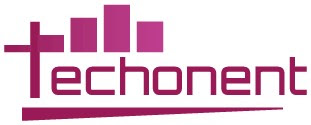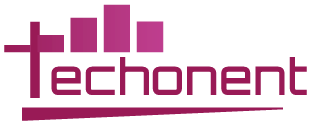
Data annotation is crucial for training AI models, yet it is a very costly step if you choose fully human annotation or automated annotation. Wondering why? This is because if you choose manual annotation, you need to hire and train many annotators to label datasets.
On the other hand, fully automated annotation means you need to purchase tools that might offer speed but lack contextual understanding, leading to high error rates and costly rework. Thus, for any business, both approaches present financial challenges, making AI model training costly.
So, what is the way to keep the data annotation process cost-effective and scalable? Active learning - where machine learning algorithms filter out relevant data points and humans annotate and review them, ensuring accuracy with less manual effort.
By combining human and machine annotation, businesses can train AI models faster, cut annotation expenses, and maintain high-quality labeled datasets. If you want to understand this in more detail, this article explores how active learning optimizes data annotation costs while ensuring cost-efficient AI model training.
Active Learning: How Human and Machine Learning Work Together?
Active learning is a hybrid data training approach that strategically selects the most valuable data points for labeling rather than annotating an entire dataset. This method reduces the time, cost, and manual effort involved in training high-performing ML models while ensuring that only the most informative samples contribute to model improvement. Here’s how it works:
● Initial Model Training: A small randomly selected subset of unlabeled data is manually annotated by human experts. This labeled dataset serves as the starting point for training the initial version of the model.
● Querying Strategy: Instead of labeling all data, the model selects the most uncertain or diverse samples that will have the greatest impact on improving its performance. These can be chosen using uncertainty sampling, margin sampling, or diversity-based selection.
● Human Annotation: The selected dataset is then annotated by humans and reviewed by their seniors to ensure the consistency and accuracy of labels.
● Model Training: The dataset annotated by humans is added to the initial dataset, and the model is retrained. The model now benefits from the added data for better performance.
The same steps are repeated: Finding the most valuable data points, labeling them, and incorporating them into the dataset, until any new additions don’t make a significant change to model performance. This approach reduces the cost and time spent on data labeling, as not all unlabeled data is annotated.
The Role of Human Annotators in Active Learning
Active learning in data annotation is one of the most successful examples of a humans-in-the-loop (HITL) approach, where the key responsibility of labeling datasets lies on the human annotators while finding the datasets to be labeled lies on machine learning algorithms. Here’s exactly where humans come into the picture:
1. Labeling Low-Confidence Data Points
The ML algorithms select the unlabeled data points where it is least confident about predictions. This data point is then annotated by humans and reviewed by senior annotators.
For example, medical imaging AI models need to be trained on scans of rare conditions and subtle abnormalities for early-stage detection. These are, however, low-confidence cases as there is limited training data, complex variations, and uncertainty around them. An active learning algorithm creates a sample of such cases and passes them to human annotators who examine the scans and provide the correct label.
2. Ensuring Consistency Across Different Cases
AI models cannot be trained on narrow datasets as it can lead to biased predictions. Using diversity sampling, the ML algorithms cluster similar data points and detect overrepresented vs. underrepresented samples. Expert annotators then label these diverse cases by ensuring inclusivity and fairness.
For example, when training AI models for autonomous driving, they must be fed with data for all types of road conditions (wide highways, narrow roads, pedestrian intersections, and rainy or snowy roads). An active learning algorithm finds such diverse datasets and passes them to human annotators who accurately label diverse conditions using image annotation techniques. This improves safety by training AI models to react to rare and varied driving environments.
3. Reviewing Assigned Labels
When junior annotators assign the labels to the smaller dataset, senior annotators are required to review each of the assigned labels to ensure they are consistent and meet the labeling guidelines. If they find any mistakes, they correct them then and there and reduce costly reworks. Moreover, reviewing ensures that the labels meet ethical guidelines, privacy laws, and compliance regulations.
For example, in training datasets for fraud detection models, junior annotators may misinterpret high-value transactions as suspicious due to the amount alone. A senior annotator, on the other hand, while reviewing the label, can come to a conclusion that it is a high-value customer and correct the label to a legitimate transaction. This oversight ensures that AI models don’t learn from incorrect labels and prevents false positives.
So far, we have seen that human annotation in active learning plays an important part. But how is it making the whole process cost-efficient? Let’s delve into it now!
Why is Active Learning a Cost-Efficient Approach for AI Model Training?
We have already discussed how creating labeled datasets for large-scale AI model training is resource-intensive. However, the active learning approach reduces this cost in the following ways:
1. Continuous Model Improvement
Instead of relying on randomly labeled large datasets, active learning focuses on identifying only the most informative samples for labeling. Human annotators label each of these samples, and then they are added to the existing training datasets to improve AI model performance. Each iteration reduces uncertainty and improves predictions, meaning the AI needs fewer newly labeled samples over time. The cost of manual annotation decreases with each cycle as the model becomes more self-sufficient.
2. Reduced Costs of Hiring Human Annotators
One of the biggest expenses of AI model training was hiring human annotators to label and review thousands of data points. Since the active learner models select only the most informative data points to be labeled and reviewed by human annotators, it reduces the total number of labels needed, allowing companies to hire fewer annotators.
Now, the company can decide whether they want to build an in-house team of annotators for this task or want to outsource data annotation to a reliable provider who already has dedicated teams of subject matter experts, depending on their budget and scaling needs.
3. Optimized Computational Resources
With active learning, the model strategically selects only smaller datasets each time rather than massive amounts of redundant data. The overall dataset size reduces the need for expensive cloud storage, memory allocation, and data retrieval costs. As a result, businesses can lower their computational expenses while maintaining high model performance and accuracy.
4. Faster Deployment
Traditional AI training requires months of labeling and processing, delaying product launch and increasing costs before businesses see any returns. With active learning, AI models only train on the most valuable dataset, which reduces training time. For businesses, this means they can deploy their AI model within timelines and gain a quicker return on investment.
Also Read: Pedrovazpaulo Business Consultant
Ending Thoughts
For business owners, cost-efficient annotation has always been a dream. But not anymore, all thanks to the active learning approach! It identifies important datasets and requests human input only where it's most needed, ensuring optimal use of resources without sacrificing accuracy. The main thing in such an approach is expert oversight, which can be gained by hiring experienced annotators or outsourcing data annotation services. If you implement this hybrid approach in the best way possible, you can achieve faster AI development, reduced costs, and improved model performance.

